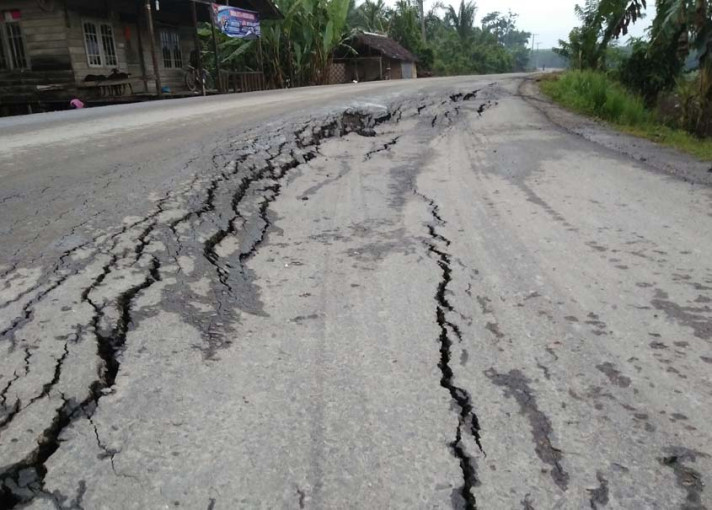
Global climate change has impacted society and presents real challenges in terms of disaster risk and threats to transportation infrastructure.
The rise in temperatures and unpredictable rainfall due to extreme weather has made road construction more prone to damage.
Dr. Ikaputra, Head of the UGM Center for Transportation and Logistics Studies (Pustral UGM), emphasized the need for strategies to adapt transportation infrastructure to climate change.
He pointed out the importance of developing innovative materials and construction methods to enhance infrastructure durability.
“Some actions can be taken, such as using climate-resistant materials, applying water for cooling during hot weather, reducing road replacement periods, managing traffic, especially heavy vehicles, and setting standards for pavement design and vehicles,” Dr. Ikaputra said during a webinar on Environmentally Friendly Road Pavement and Climate Change Adaptation on Thursday (Jan. 23).
However, he added, implementing these strategies is not easy due to the significant funding required for research and development.
“It takes time and money. Additionally, political and institutional obstacles, such as conflicts of interest and limited institutional capacity to adopt new technologies, also present challenges,” Dr. Ikaputra explained.
He stated that Pustral UGM is committed to making real contributions to addressing this challenge through interdisciplinary collaboration.
Academics, practitioners, and policymakers are working to share knowledge on best practices from countries like Slovakia, which has successfully implemented innovative technologies such as High Modulus Asphalt Concrete (HMAC) and Porous Asphalt.
“We hope today’s discussion will inspire the application of similar technologies in Indonesia,” he said.
According to researchers, innovative solutions to enhance road durability include using eco-friendly materials like nanocomposites, Warm Mix Asphalt (WMA) technology, and climate-based design methods.
This approach not only strengthens infrastructure resilience but also supports environmental sustainability.
Meanwhile, Dr. Latif Budi Suparma, a Pustral UGM expert and Chair of the Master’s Program in Systems and Transportation Engineering, explained that environmentally friendly infrastructure aims to minimize environmental impacts, such as resource use and pollution, while also addressing social effects on communities.
Environmentally friendly infrastructure, he said, aims to extend infrastructure lifespan and reduce maintenance needs.
“Some examples of eco-friendly road pavements include using recycled materials to minimize waste, permeable pavements to reduce runoff and improve water quality, biogenic asphalt technology to reduce CO2 emissions during production, and warm mix asphalt, which requires lower temperatures and energy during processing,” he explained.
Dr. Suparma acknowledged that climate change affects pavement directly and indirectly.
Rising temperatures can directly reduce road quality, while changing rainfall patterns can affect road surface and stability, particularly in clay soil or areas with high groundwater, increasing flood risk.
“Indirectly, climate change reduces road surface quality, potentially affecting safety and increasing vehicle usage but reducing speed. This can also lead to increased traffic noise,” he concluded.
Author: Agung Nugroho
Post-editor: Afifudin Baliya
Photo: Harian Terbit

